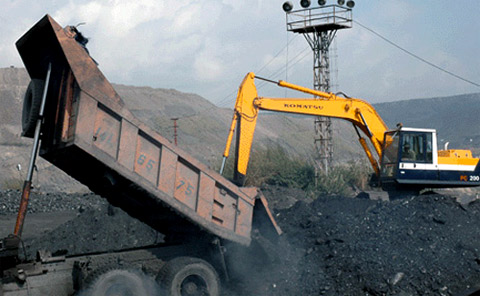
The ship carrying 9570 tons of coal has docked at Cat Lai Port in HCM City. This is the first time Vietnam has had to import coal. The imports will be provided to new thermo power plants in the central and northern regions.
As such, Vietnam, a coal exporter, has officially begun importing coal.
Commenting about this, Dr Nguyen Thanh Son, Director of Song Hong Power Company said on Tam Nhin that this is the result of the unreasonable coal export policy. For a long time, coal exports had been considered an achievement. However, it is now obvious that the coal export only brings immediate benefits, but threatens long term losses.
Over the last 13 years, if the Vietnam Coal and Mineral Industries Group (Vinacomin), instead of trying to push up coal exports and injecting money in many non-coal sectors, had made heavy investment in the coal industry to improve the production efficiency, Vietnam would have been able to delay the time of importing coal for tens years.
Analysts have also accused Vinacomin of failing to implement the coal exploitation and export plan approved by the Prime Minister, which says that the group exploits the volume of coal big enough to meet domestic demands and minimizes the coal exports.
The problem is that, coal exports can bring such an attractive profit that everyone wishes to export coal. Previously, the Ministry of Energy had only one enterprise which exported coal – Coalimex. However, after the Coal Corporation was established, the “cake of coal exports” has been divided to many companies. Especially, many companies which do not have coal, also have the quotas for export.
Son said on Tam Nhin that in many cases, the coal export prices were even lower than the production costs. According to the World Bank, Vietnam’s coal export prices are just equal to 2/3 of Australia’s coal export prices for the same kinds of products.
Nguoi lao dong newspaper has commented that the neighbor China has been continuously purchasing coal from Vietnam as much as possible for the last many years to reserve. Meanwhile, Vietnam has been trying to export coal, even though it foresees the coal shortage in the future. In the first five months of the year, Vinacomin exported 6.64 million tons of coal.
What will happen?
According to Vinacomin, the coal import will be carried out in a trial basis in 2011. To date, no official coal import plan has been set up, but Vinacomin has warned that in 2012, Vietnam’s coal domestic supply would be short of 10 million tons, and the coal import volume may reach 28 million tons by 2015.
From 2020, Vietnam would have to import 60 million tons a year. However, it is not easy to import coal, because Vietnam will have to compete with many other countries right in the markets with profuse supplies such as Indonesia or Australia.
It is a growing tendency that other countries tend to put strict control over the use of the natural resource. That explains why some countries, like China, Japan and India, which foresaw the tendency, purchased mines in the countries in Asia Pacific tens of years ago.
According to the Dong Bac Coal and Natural Resources Company, the demand for coal is increasingly high in the provinces in the south of the central region and in the southern region. Coal is needed for the metallurgy industry, and for a series of thermo power plant projects which are under implementation.
While most of the countries in the world, including poor countries, have become more cautious when building coal-run thermo power plants, Vietnam seems to be slow in making research and considering using clean energy. Meanwhile, environmentalists consider the projects that use fossil fuel as “dirty projects”
N.Ha